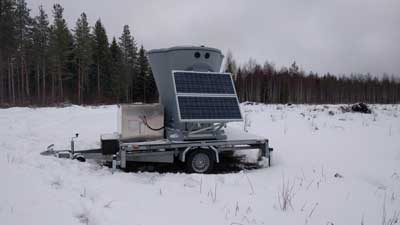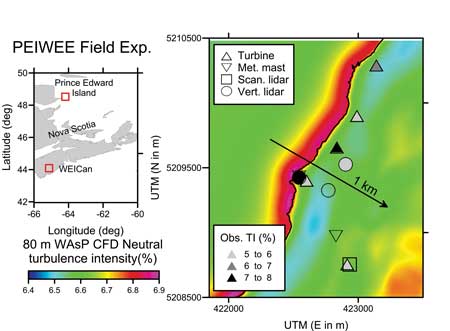- Category: Articles
 |
 |
The Use of Nano- and Micro-sized Particle-Based Lubricant Additives
Nano- and micro-sized particle-based lubricant additives are used in wind turbine applications, and also in engines, gears and bearings in different industry sectors such as cement, steel, mining, maritime and automotive around the world. Treated machinery, gearboxes and bearings can run better with reduced friction and temperature and greater reliability and durability due to reduced abrasion and wear. Rewitec is an independent, medium-sized business that develops such additives, and in this article its Managing Director Stefan Bill describes how the company’s products have undergone tribological tests and been shown to provide life extension upgrades.
By Stefan Bill, Rewitec, Germany
- Category: Articles
 Proven Practices for Optimal Results
Proven Practices for Optimal Results
Onshore wind farm developers are increasingly looking to cold climate regions around the globe for various reasons, including the strength of the available resource and low population density. However, carrying out high-quality measurement campaigns in cold climates poses a number of unique challenges for developers.
By Juha Paldanius and Nihat Hunerli, Vaisala, Hamburg, Germany
- Category: Articles
 What do Shark Fins, Winglets and Turbulators Have in Common?
What do Shark Fins, Winglets and Turbulators Have in Common?
Ambitions and developments in offshore wind energy have forced us to re-evaluate our approach and methods in wind turbine blade design once more. With the ultimate goal of reducing the levelised cost of energy (LCoE) through optimised tip design, the InnoTip research project ran as a collaboration between LM Wind Power’s aerodynamics team and ECN. During this project three new tip designs were delivered and two were tested by extending the blades on ECN’s 2.5MW test turbines with a temporary add-on tip extension – a unique process.
By Ozlem Ceyhan Yilmaz, ECN, The Netherlands and Jordy van Kalken, LM Wind Power, Denmark
- Category: Articles
 Enhancing Reliability and Reducing LCOE of Drive-Trains
Enhancing Reliability and Reducing LCOE of Drive-Trains
Advances in design, materials and drive-train testing have resulted in substantial improvements of wind turbine reliability, particularly in the 2–4MW class [1]. But with continuous growth in size of turbines, the risk of gearbox damage appears to be back on the agenda. Further upscaling of conventional drive-train designs is limited and alternative architectures might be required. A flexible element at the low-speed shaft allows the gearbox to be mounted rigidly to the main frame and relieves the gearbox from unnecessary stress and fatigue. The author of this article was part of a team that recently presented the results of a load study of such a system [2]. The focus of the current article is on a commercial study with the objective to identify the potential of reducing operational cost (OPEX) and enhancing levelised cost of energy (LCOE), using the example of a 6MW offshore wind turbine.
By Alexander Kari, Geislinger GmbH, Austria
- Category: Articles
 Fog Shows Amazing Details over North Sea Wind Farm
Fog Shows Amazing Details over North Sea Wind Farm
On 25 January 2016 at 12:45 UTC several photographs of the offshore wind farm Horns Rev 2 were taken by helicopter pilot Gitte Lundorff with an iPhone. A very shallow layer of fog covered the sea. The photos of the fog over the sea dramatically pictured the offshore wind farm wake. Researchers got together to investigate the atmospheric conditions at the time of the photos by analysing local meteorological observations and wind turbine information, satellite remote sensing and nearby radiosonde data. Two wake models and one mesoscale model were used to model the case and explain what was seen.
By Charlotte Bay Hasager, Ioanna Karagali, Patrick Volker and Søren Juhl Andersen Technical University of Denmark, Denmark and Nicolai Gayle Nygaard, DONG Energy, Denmark
- Category: Articles
Virtual Wind Farm Simulation
 The WakeBlaster project team was formed in January 2017 and is an interdisciplinary team of six dedicated scientists, software engineers, expert computer modellers and wind industry professionals. Together the team has over 55 years of experience in the wind industry. Its mission is to produce a cloud-based software component which delivers down-to-earth, cost-effective, scalable and dynamic yet accurate wind farm simulations.
The WakeBlaster project team was formed in January 2017 and is an interdisciplinary team of six dedicated scientists, software engineers, expert computer modellers and wind industry professionals. Together the team has over 55 years of experience in the wind industry. Its mission is to produce a cloud-based software component which delivers down-to-earth, cost-effective, scalable and dynamic yet accurate wind farm simulations.
By Dr Wolfgang Schlez, Director of ProPlanEn, UK
- Category: Articles
 Use of Lidars to Quantify Flow and Wind Turbine Wakes
Use of Lidars to Quantify Flow and Wind Turbine Wakes
Wind turbine nameplate capacities (and physical dimensions) are increasing and turbines are being deployed in increasingly complex/harsh environments. Hence, shortcomings are becoming evident in our understanding of the flow parameters of relevance to wind resources and turbine loading in inhomogeneous settings. Furthermore, propagation and dissipation of wakes from turbines on ridges and/or on escarpments and/or when flow interacts with vegetation are incompletely understood. While model predictions of the mean and time-evolving components of flow may be imperfect in simple topography, model errors tend to be relatively small. However, systematic and non-trivial model biases can exist in complex terrain. Hence there is a need for full-scale experiments using remote sensing technologies (notably lidars) to quantify key flow characteristics and provide data that can be used in model development and evaluation. Here we describe some key research opportunities and challenges facing these experimental investigations and present results from our recent field campaigns.
By Rebecca J. Barthelmie and Sara C. Pryor, Cornell University, USA










